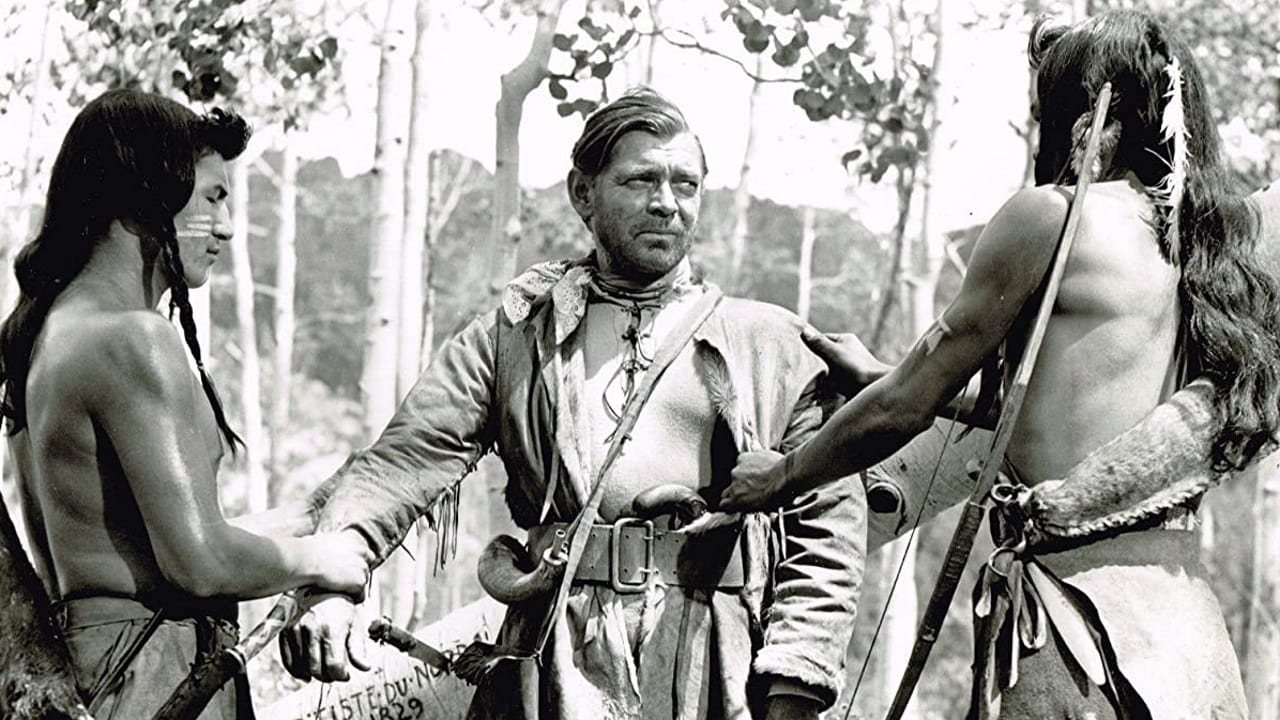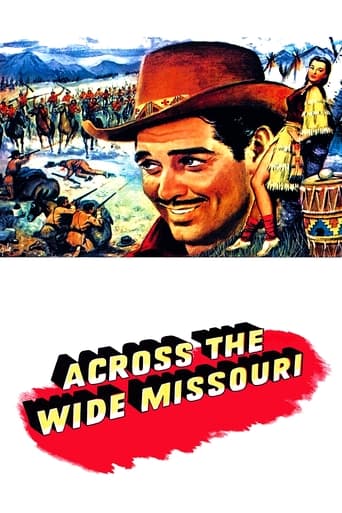

This story about the rough and tumble fur trappers who traversed Indian lands to ply their trade stars Clark Gable, supported by a strong cast. With a voice over that was added in post-production to add more depth to this film, it fairly realistically portrays existence in the western territories before the invasion of white civilization.The scenery is beautiful, with vistas that show winding rivers stretching to the horizon and majestic mountains towering over forests and plains. The natives and their society are portrayed with respect, though one scene shows a scalping. This was undoubtedly added to help delineate the Indians who were aligned with Iron Shirt, who is effectively the villain of the story.Though Gable was not feeling or looking his best for this film, the story is charming enough to be enjoyable. It includes moments of humor and a love story that is unique and touching. I particularly enjoyed the use of language in this film--English, French and Indian tongues combined.Gable still had other noteworthy films ahead of him when this film was released, including "Mogambo" (1953), "Teacher's Pet" (1958), and "The Misfits" (1961).
... View MoreFur-trapper in 1829 Colorado marries a Blackfoot Indian chief's beautiful, headstrong daughter, but runs afoul of her people. Adaptation of historian Bernard DeVoto's book was a peculiar choice for both MGM and its resident star, Clark Gable. Gable was probably too old for such an athletic role, although he gazes at María Elena Marqués with convincing adoration and gives the proceedings some charismatic panache. Otherwise, the usual western-genre elements are firmly in place, including a "Skip to My Lou" refrain on the soundtrack and the old jest of men dancing 'round the campfire with other men when the females become scarce (of course this lively, joshing scene breaks out into a fight to show us in the audience that these guys are 'real men'). William A. Wellman directed, and he seems to have been saddled with setting the narrative in quasi-flashback, complete with a narration (by Howard Keel!) of Gable's grown son telling us the story in elemental terms. William Mellor's Technicolor cinematography and the Rocky Mountain locales are stunning--more so than the plot--and yet, after awhile the landscapes begin to resemble color portraits adopted for effect for our benefit. ** from ****
... View MoreHonesty seems the first quality of this Wellmann work:it uses no less than three different languages:English,Indian language and French:it's really great fun to hear the cast sing on Xmas day the Canadian "Alouette gentille alouette" en Français dans le texte...even if the words have nothing to do with Christ's birth.The second strong point is scenery:the landscapes are breathtakingly beautiful and the color is splendid indeed.Mountains and forest are lovingly filmed .A lot of people will probably note similarities with Delmer Daves's famous "Broken arrow" which was released the precedent year .It's almost the same ending.I would favor Daves's work over Wellmann's because his characters are more endearing , his story more absorbing and the relationship characters/nature more convincing.But "Across the wide Missouri" is worth watching :the story is told by Gable's son who appears as a baby in the movie and shortly as a child .One scene is particularly touching,even if we realize it only afterward:Gable and his Indian wife are kissing each other while the small child is watching.There are a lot of deaths in this often cruel story,but neither the White nor the Indians are demeaned.
... View MoreI see that some commenters really panned this film. I, however, am in that nearly two-to-one majority who rates it in the upper half of the scale. Maybe it was the mood I was in when I watched it, but here is a western devoid of that frenetic gunplay. Subdued and restrained are good adjectives. Nice scenery. Perhaps there IS an unrealistic emphasis on good-timin'-it, but could it also be an attempt to balance out the rigors? (A balance which is necessary for some of us.) I actually found some of the humor kind of simplistically appealing, which, too, is how I regard the plot: Flint Mitchell thinks that his marrying a squaw will enhance his trapping efforts. Initially a union of convenience, the relationship eventually deepens and produces a son. When a white-man-caused death results in a Blackfoot leadership change, tension increases. The Mrs.-Mitchell-role, portrayed by a no-name (but quite capable) actress, is deserving of higher billing. In my opinion, this, among other alternatives, is likely to be the better selection.
... View More